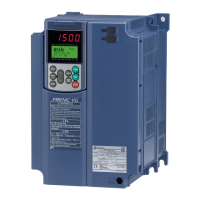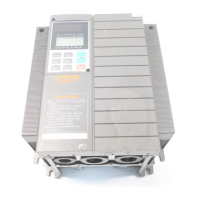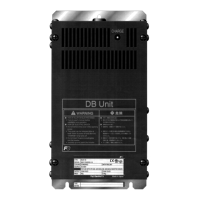at auto-restarting. Design your machinery so that safety is ensured even at restarting.
Otherwise an accident could occur.
Under vector control with speed sensor (F42=6)
Data for F14 Description
0: Trip immediately As soon as the DC link bus voltage drops below the undervoltage detection level due to a
momentary power failure, the inverter issues undervoltage alarm
lu
and shuts down its output
so that the motor enters a coast-to-stop state.
1: Trip after a recovery from
power failure
As soon as the DC link bus voltage drops below the undervoltage detection level due to a
momentary power failure, the inverter shuts down its output so that the motor enters a
coast-to-stop state, but it does not enter the undervoltage state or issue undervoltage alarm
lu
.
The moment the power is restored, an undervoltage alarm
lu
is issued, while the motor
remains in a coast-to-stop state.
2: Trip after momentary
deceleration is stopped
As soon as the DC link bus voltage drops below the continuous running level due to a
momentary power failure, decelerate-to-stop control is invoked. Decelerate-to-stop control
regenerates kinetic energy from the load’s moment of inertia, slowing down the motor and
continuing the deceleration operation. After decelerate-to-stop operation, an undervoltage
alarm
lu
is issued.
3: Continue to run If the F14 data is set to “3,” then the “Continue to run” function is enabled.
4: Restart from frequency at
power failure
5: Restart from starting
frequency
As soon as the DC link bus voltage drops below the undervoltage detection level due to a
momentary power failure, the inverter shuts down the output so that the motor enters a
coast-to-stop state.
Even if the F14 data is set to “3,” the “Continue to run” function is disabled.
If a run command has been input, restoring power restarts the inverter at the motor speed
detected by the speed sensor.

